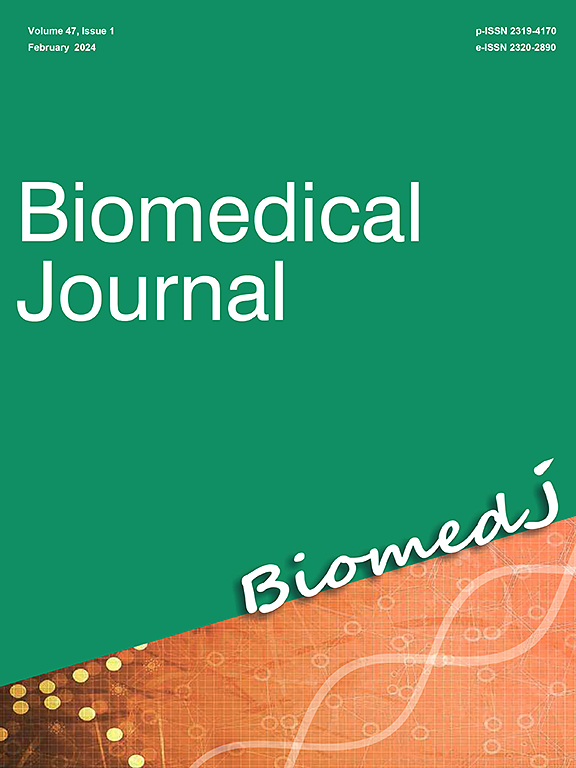迈向个性化的血压时间疗法。
IF 4.4
3区 医学
Q2 BIOCHEMISTRY & MOLECULAR BIOLOGY
引用次数: 0
摘要
背景:关于服用抗高血压药物的最佳时间尚未达成共识。不同的降压药对血压昼夜节律模式的不同影响,以及在一天中不同时间接受相同治疗的个体患者的不同反应,可能是引起争议的部分原因。方法:重新分析以往研究中每隔7天30分钟的动态血压监测(ABPM)数据,比较5种药物(氨氯地平、阿替洛尔、卡托普利缓释片、长效卡替洛尔和尼伐地平)在醒后1.5小时或每天2次服用对每组7 ~ 13例常规诊断患者24小时血压的影响。来自30名接受氯沙坦/氢氯噻嗪治疗至少1个月的患者的类似数据,在6个不同的时间中,每个时间与他们的觉醒时间有关,用于比较治疗时间对不同患者的影响。结果:部分但非全部药物影响血压的24小时振幅和/或相位,或影响12小时谐波项对血压昼夜波形的贡献。虽然晚间给药增加了一些患者的24小时血压振幅,但其他患者在早晨给药时达到了预期的效果。结论:考虑到24小时血压节律的所有特征每天都有很大的变化,建议在对几天内收集的ABPM数据进行时间生物学分析的指导下,个性化优化治疗时机,以最佳地匹配健康的昼夜节律模式。本文章由计算机程序翻译,如有差异,请以英文原文为准。
Toward a personalized chronotherapy of blood pressure
Background
A consensus regarding the optimal time to administer anti-hypertensive medications has not been reached. Possible differential effects of different anti-hypertensive drugs on the circadian pattern of blood pressure (BP) and differential responses of individual patients receiving the same treatment at different times of the day may partly account for the controversy.
Methods
Ambulatory blood pressure monitoring (ABPM) data available at 30-min intervals for 7 days from previous studies are reanalyzed to compare the effect of five drugs (amlodipine, atenolol, captopril retard, long-acting carteolol, and nilvadipine) taken 1.5 h after awakening or twice a day on the 24-h profile of BP from 7 to 13 conventionally diagnosed patients per treatment group. Similar data from 30 patients receiving losartan/hydrochlorothiazide for at least one month at each of six different times in relation to their time of awakening serve to compare the effect of treatment time in different patients.
Results
Some but not all drugs affected the 24-h amplitude and/or phase of BP or the contribution of the 12-h harmonic term to modify the circadian waveform of BP. While evening dosing increased the 24-h amplitude of BP in some patients, other patients achieved such a desired effect with morning dosing.
Conclusion
Personalized optimization of treatment timing to best match a healthy circadian BP pattern is recommended, guided by chronobiological analyses of ABPM data collected over several days in view of the large day-to-day variability in all features of the 24-h BP rhythm.
求助全文
通过发布文献求助,成功后即可免费获取论文全文。
去求助
来源期刊

Biomedical Journal
Medicine-General Medicine
CiteScore
11.60
自引率
1.80%
发文量
128
审稿时长
42 days
期刊介绍:
Biomedical Journal publishes 6 peer-reviewed issues per year in all fields of clinical and biomedical sciences for an internationally diverse authorship. Unlike most open access journals, which are free to readers but not authors, Biomedical Journal does not charge for subscription, submission, processing or publication of manuscripts, nor for color reproduction of photographs.
Clinical studies, accounts of clinical trials, biomarker studies, and characterization of human pathogens are within the scope of the journal, as well as basic studies in model species such as Escherichia coli, Caenorhabditis elegans, Drosophila melanogaster, and Mus musculus revealing the function of molecules, cells, and tissues relevant for human health. However, articles on other species can be published if they contribute to our understanding of basic mechanisms of biology.
A highly-cited international editorial board assures timely publication of manuscripts. Reviews on recent progress in biomedical sciences are commissioned by the editors.
 求助内容:
求助内容: 应助结果提醒方式:
应助结果提醒方式:


